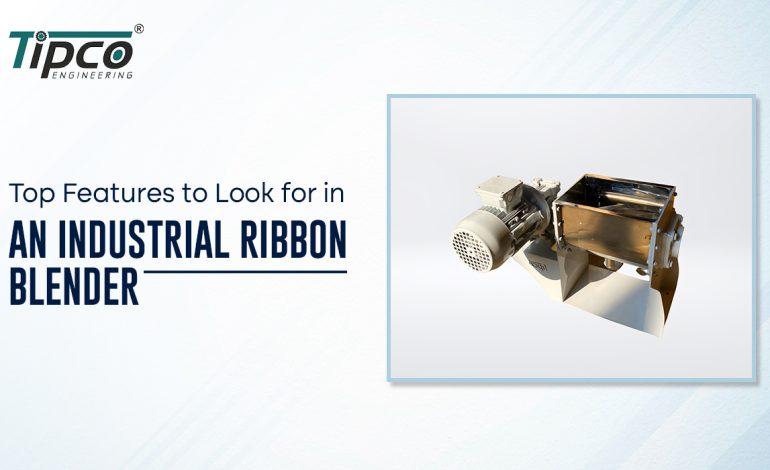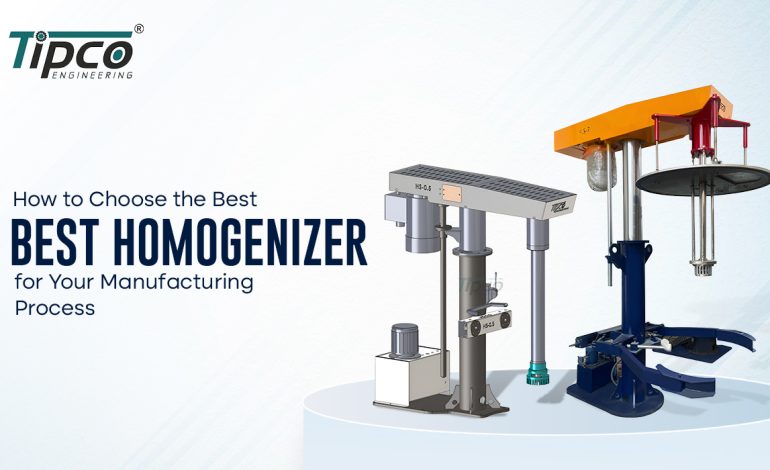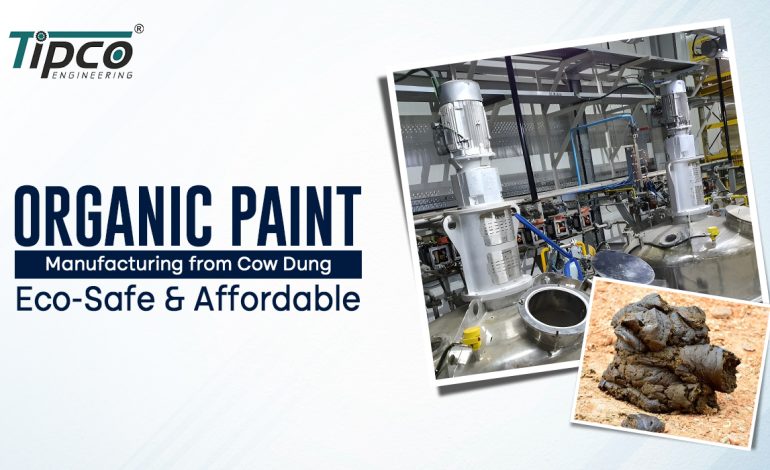
Top Features to Look for in an Industrial Ribbon Blender
In the food, drug, chemical, and plastics industries, as well as other bulk material handling fields, an industrial ribbon blender is essential for mixing materials quickly and evenly. It is possible to mix powders, grains, and sometimes liquids evenly in these mixers in a short amount of time. However, not every ribbon mixer is the same. The most important thing for getting good mixing is to choose a machine that has the right features for your process.
Picking the right ribbon blender from Tipco Engineering can help you speed up production, cut down on downtime, and keep the quality of your products uniform. To get the most out of your investment, whether you’re buying a new system or improving an old one, you need to know which features really make a difference.
Mixing Efficiency and Blade Design
The mixing blades from Tipco Engineering, which are usually made like helical ribbons, are what make an industrial lab blender work. A well-made ribbon stirrer moves materials both in a circle and across the batch, making sure that everything is mixed well. To avoid dead zones and too much mixing, look for blenders with an even distribution of outer and inner ribbons.
A lot of what determines uniform spread is how far the blades are from the wall of the trough. Being precise in this area helps keep the mixture free of spots that aren’t mixed, which is especially important when mixing ingredients with different particle sizes or bulk densities.
Build Quality and Building Materials
The building material is very important because lab ribbon blender from Tipco Engineering are often used to work with products, chemicals that eat away at metal, or rough materials. People often choose stainless steel, especially SS304 or SS316, because it lasts a long time, is easy to clean, and doesn’t rust. Specialised coatings or heavy-duty alloys may be needed for materials that are more active.
For uses like food or medicine, an internal finish that is smooth is necessary to keep things clean and avoid contamination. It is better to have polished surfaces and welded gaps so that material doesn’t build up and bacteria doesn’t grow.
How the seal works and how well it seals
The kind of release system affects both the time it takes to process and how well it moves materials. You may need a slide gate, butterfly valve, or knife gate, depending on the job. The valve should let the blender be emptied all the way without causing any waste to build up or leaks.
Another important thing to think about is the seal quality around the shaft. Leaky locks can let germs in, cause product loss, and pose safety risks. To keep the blending area clean and sealed, double mechanical seals or air-purged seals are often used.
Conclusion
A ribbon blender machine is an investment that will pay off in the long run because it improves the quality and speed of your work. Putting important features like good blade design, strong construction, good seals, reliable discharge mechanisms, and the ability to be automated at the top of the list guarantees better output and easier operations.
The right choice not only improves the accuracy of mixing, but it also gives you years of useful service. Tipco Engineering has a high-quality industrial ribbon blender mixer that can be used in labs and small production settings. This machine is useful for making things that are very thick, like polyester glue, distemper, and emulsion paint.
Also read: Ribbon Blenders for Pharmaceutical Use: Ensuring Quality and Consistency





